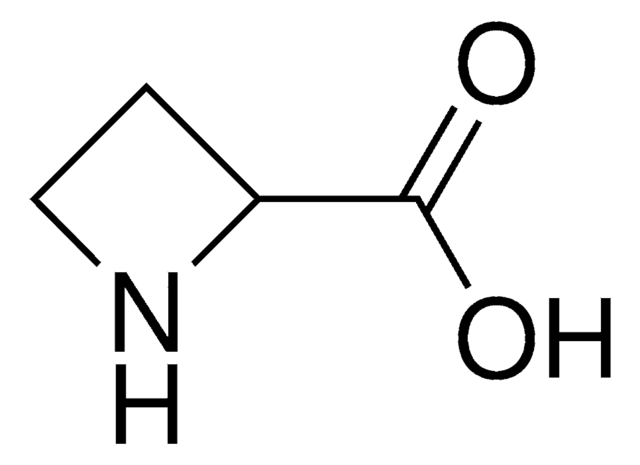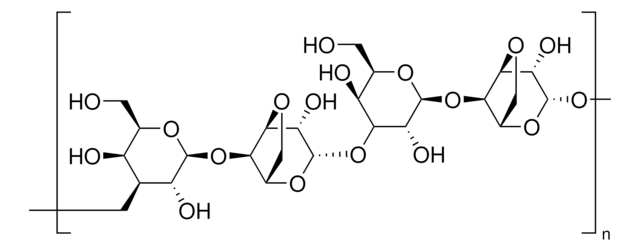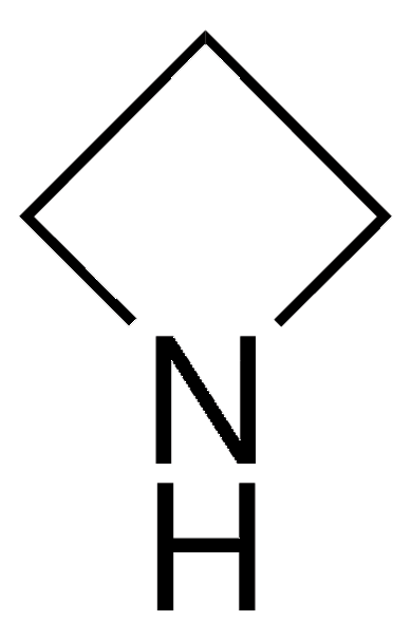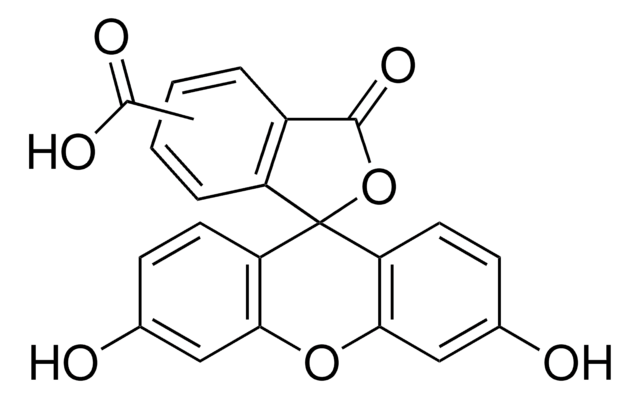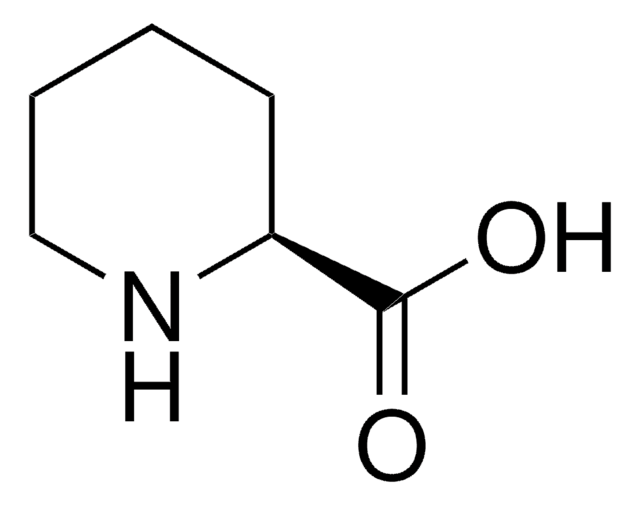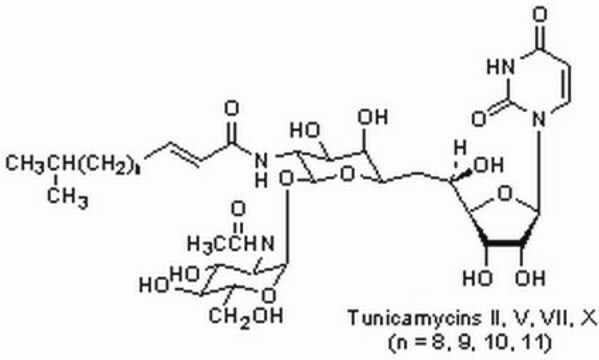A0760
L-Azetidine-2-carboxylic acid
≥99%
Sinonimo/i:
(S)-Azetidine-2-carboxylic acid
Autenticatiper visualizzare i prezzi riservati alla tua organizzazione & contrattuali
About This Item
Formula empirica (notazione di Hill):
C4H7NO2
Numero CAS:
Peso molecolare:
101.10
Beilstein:
80680
Numero CE:
Numero MDL:
Codice UNSPSC:
12352209
ID PubChem:
NACRES:
NA.32
Prodotti consigliati
Livello qualitativo
Saggio
≥99%
Stato
powder
Stringa SMILE
OC(=O)[C@@H]1CCN1
InChI
1S/C4H7NO2/c6-4(7)3-1-2-5-3/h3,5H,1-2H2,(H,6,7)/t3-/m0/s1
IADUEWIQBXOCDZ-VKHMYHEASA-N
Cerchi prodotti simili? Visita Guida al confronto tra prodotti
Descrizione generale
L-Azetidine-2-carboxylic acid is a non-protein amino acid and teratogenic agent. It is toxic in nature.
Applicazioni
L-Azetidine-2-carboxylic acid has been used as a:
- collagen synthesis inhibitor
- protein folding antagonist
- as a standard in liquid chromatography-mass spectrometry
Azioni biochim/fisiol
Azetidine-2-carboxylic acid (AZC) triggers protein aggregation or upregulates the expression of an aggregation-prone mutant protein, upon interference with nascent protein folding.
L-Azetidine-2-carboxylic acid is an inhibitor of collagen synthesis that is anti-angiogenic.
L-Azetidine-2-carboxylic acid is an inhibitor of collagen synthesis that is anti-angiogenic. It is a four-membered ring analog of L-proline that causes protein misconstruction when incorporated instead of proline.
Codice della classe di stoccaggio
11 - Combustible Solids
Classe di pericolosità dell'acqua (WGK)
WGK 3
Punto d’infiammabilità (°F)
Not applicable
Punto d’infiammabilità (°C)
Not applicable
Dispositivi di protezione individuale
Eyeshields, Gloves, type N95 (US)
Scegli una delle versioni più recenti:
Possiedi già questo prodotto?
I documenti relativi ai prodotti acquistati recentemente sono disponibili nell’Archivio dei documenti.
I clienti hanno visto anche
Asmita Ghosh et al.
Cellular and molecular life sciences : CMLS, 76(8), 1605-1621 (2019-01-27)
The proteostasis network (PN) comprises a plethora of proteins that are dedicated to aid in protein folding and maintenance; some with overlapping functions. Despite this, there are multiple pathophysiological states associated with depletion of chaperones. This is counter-intuitive, assuming cells
Kate Samardzic et al.
Amino acids, 51(8), 1221-1232 (2019-07-16)
In addition to the 20 protein amino acids that are vital to human health, hundreds of naturally occurring amino acids, known as non-proteinogenic amino acids (NPAAs), exist and can enter the human food chain. Some NPAAs are toxic through their
Azetidine-2-carboxylic acid in garden beets (Beta vulgaris)
Rubenstein E, et al.
Phytochemistry, 67(9), 898-903 (2006)
Essential function of Mec1, the budding yeast ATM/ATR checkpoint-response kinase, in protein homeostasis
Corcoles-Saez I, et al.
Developmental Cell, 46(4), 495-503 (2018)
Nadinath B Nillegoda et al.
Molecular biology of the cell, 21(13), 2102-2116 (2010-05-14)
Quality control systems facilitate polypeptide folding and degradation to maintain protein homeostasis. Molecular chaperones promote folding, whereas the ubiquitin/proteasome system mediates degradation. We show here that Saccharomyces cerevisiae Ubr1 and Ubr2 ubiquitin ligases promote degradation of unfolded or misfolded cytosolic
Il team dei nostri ricercatori vanta grande esperienza in tutte le aree della ricerca quali Life Science, scienza dei materiali, sintesi chimica, cromatografia, discipline analitiche, ecc..
Contatta l'Assistenza Tecnica.